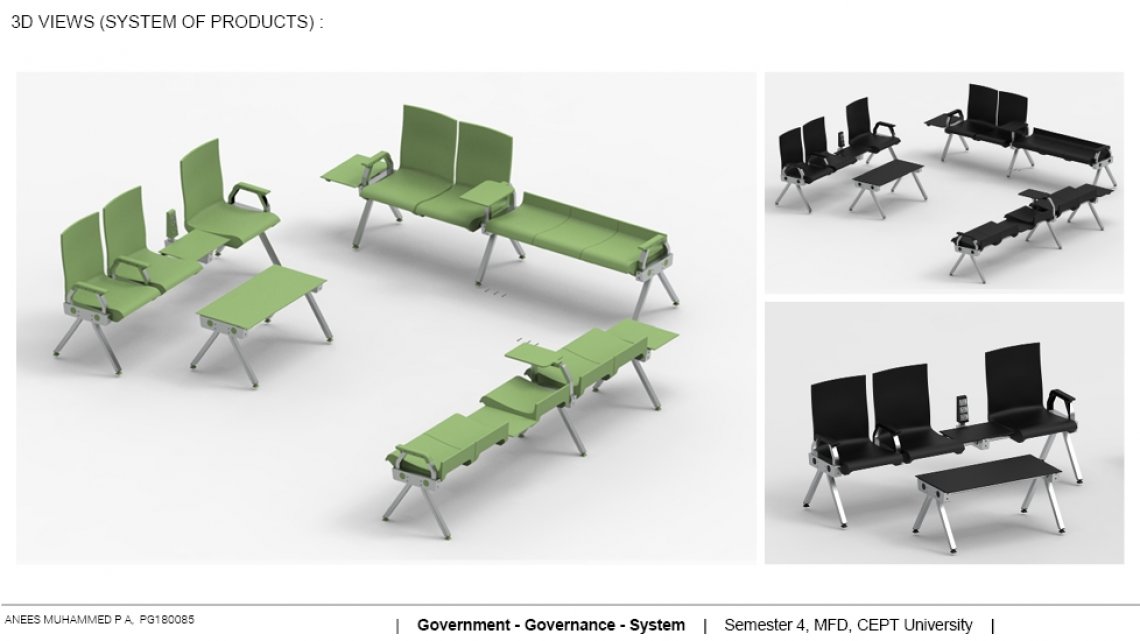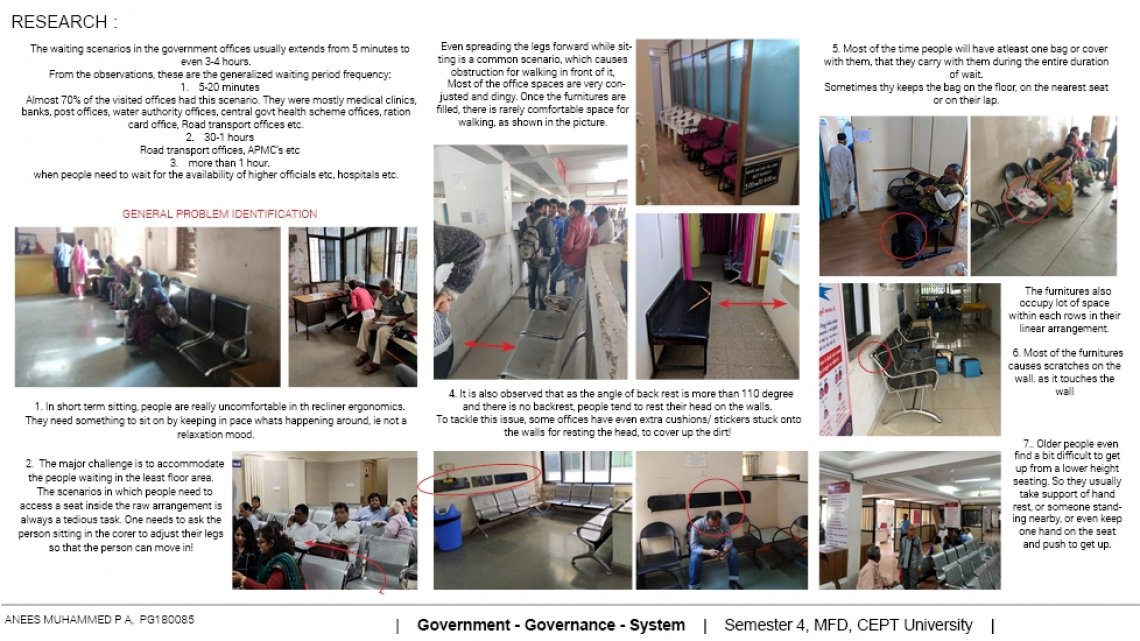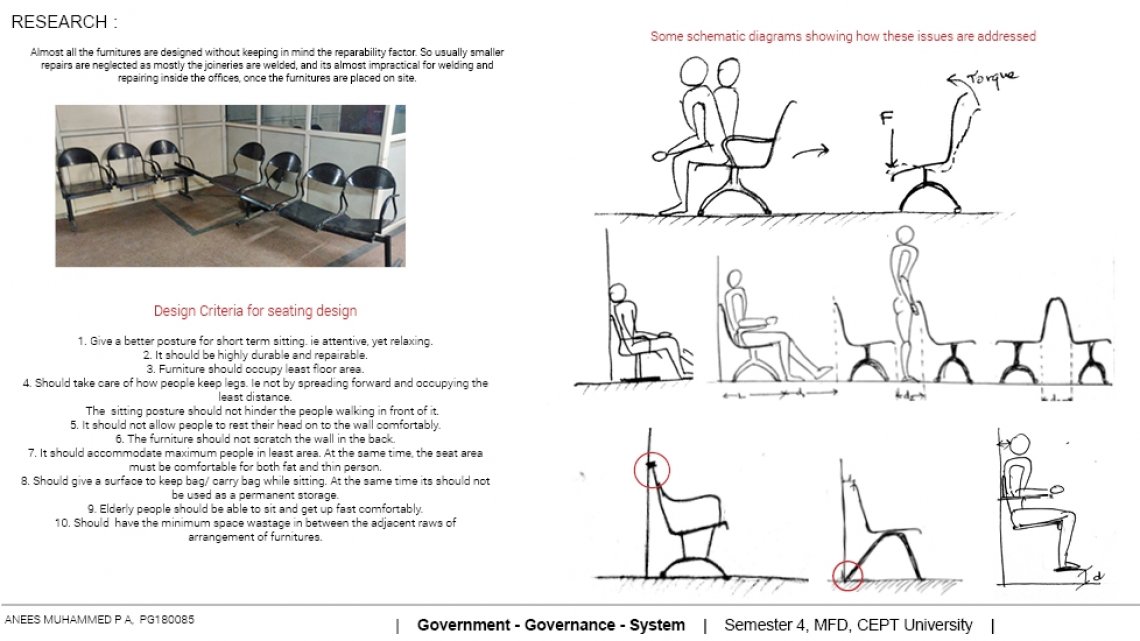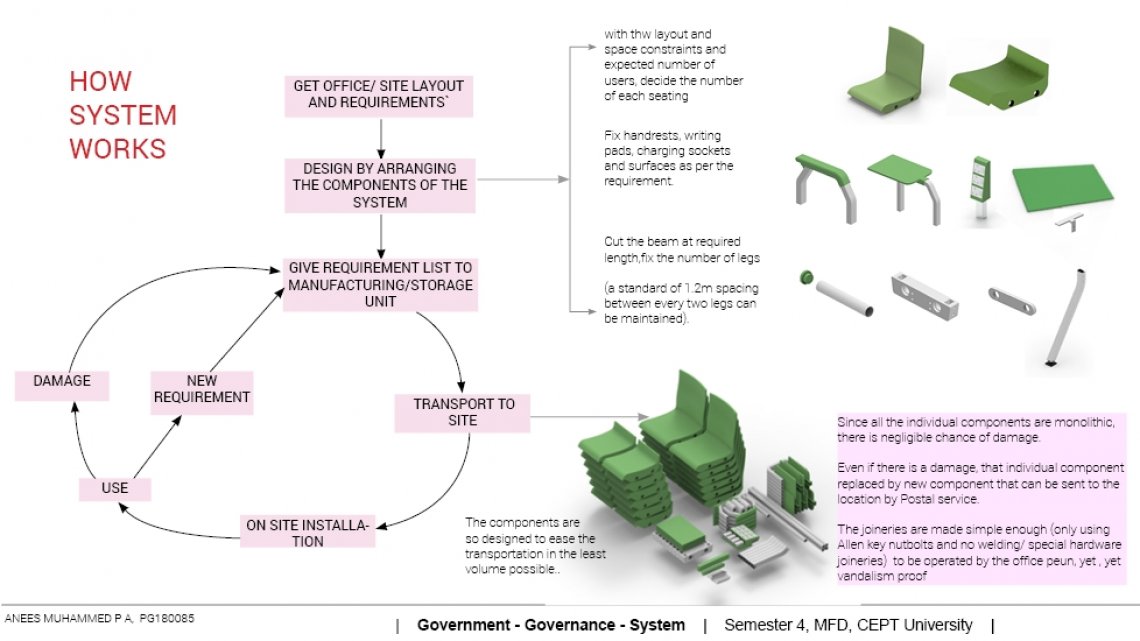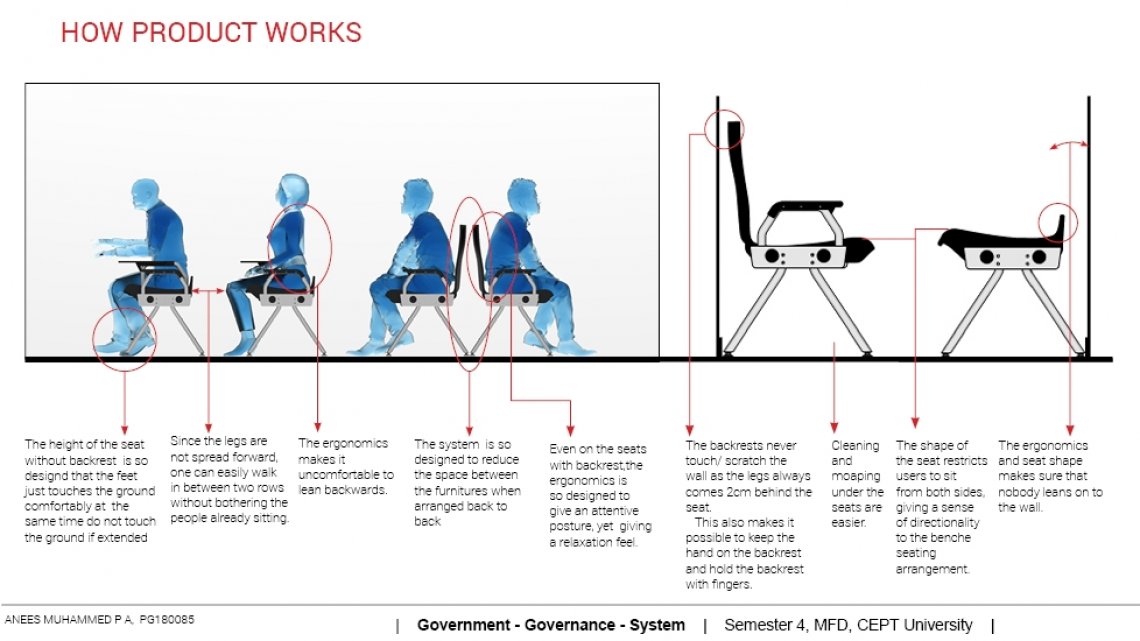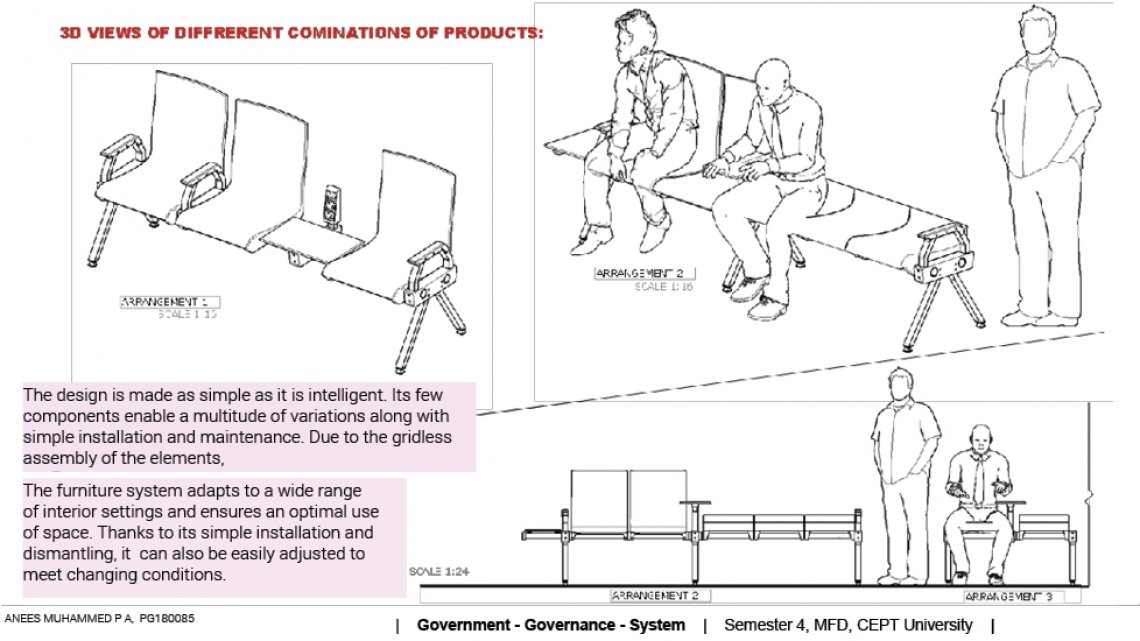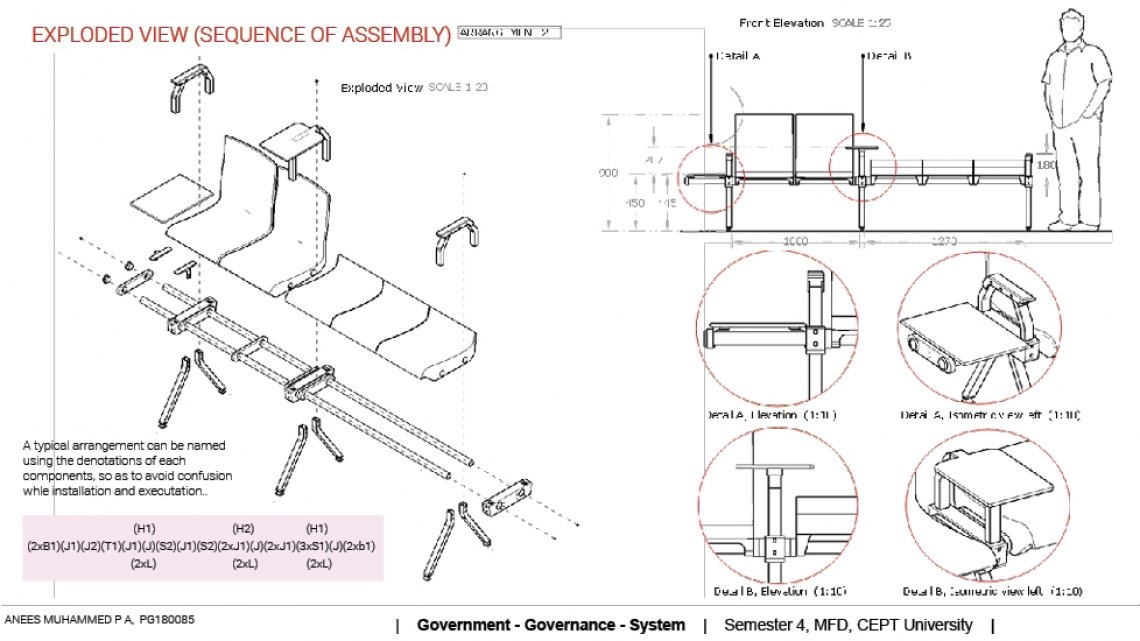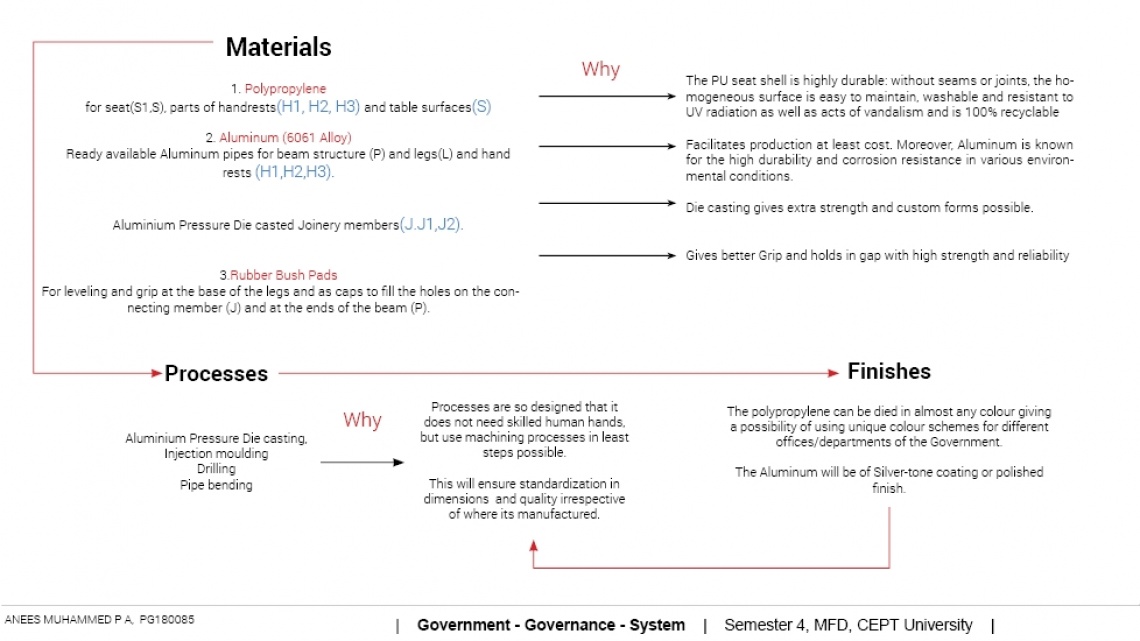Your browser is out-of-date!
For a richer surfing experience on our website, please update your browser. Update my browser now!
For a richer surfing experience on our website, please update your browser. Update my browser now!
TO DESIGN A FURNITURE SYSTEM SPECIFIC TO THE WAITING AREAS IN GOVERNMENT OFFICES. PROBLEM STATEMENT Different offices have different functions and users. In most of the government offices it is a need to give waiting facility to the public coming there to get their various jobs done. It is evident that these notions of the government offices are mainly depended on the customers views on the look and feel and the speed of the processes and services. The customers mainly interacted in the waiting areas and they play a major role in setting the mindset of the people. So a waiting area is some space and amenities provided for the passing of time. But where the focus needs to be put in is in the experience of waiting, how to make the waiting experience help in the changing of mindset of people towards the government offices. From the study, it is found that even if the user group, time frame of using, the various needs of the waiting areas etc differ in each departments, currently most of the needs are not fulfilled by the amenities provided, Moreover, everywhere it is a same pattern of furniture that is being provided. It is found that the waiting experience in the government institutions are chaotic and unappealing to the public. Also, the reason why general public hesitates to approach government offices is because they feel the waiting time is too much and the facilities in the waiting areas are least taken care of. Almost all the government offices have the same type seating in the waiting areas in different context like a hospital, railway station or a post office, which are almost broken/destroyed and unusable within a short span as they are not designed taking into account the maintenance and reparability in a long run. Moreover there is no uniformity within the furniture in the waiting area within an office. There is also no sense of branding in most of the govt. Departments. They are not designed taking into account, the overall available space for furniture in the smaller offices neither there is a standardization in the materiality, functionality for different departments nor any relation to the surrounding/conditions where they are placed. This asks for a better designed versatile system of furniture specific for waiting and other amenities that can be mass customized for different govt departments considering the nature of users & their needs and behaviors within their work area. This also creates a possibility to create a furniture system that is unique to the government.
